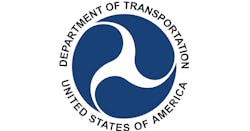USDOT Supply Chain Tracker Shows Progress as Supply Chains Remain Stressed
The U.S. Department of Transportation (USDOT), on April 8, shared the latest Transportation Supply Chain Indicators Tracker, as part of the Administration’s Supply Chain Disruptions Task Force.
The report notes that despite challenges, there are signs of progress in the goods movement chain. Ports—including the Ports of Los Angeles and Long Beach collectively—imported more containers than any previous January. The total number of container ships waiting for berths at U.S. ports has dropped by 35% since peaking in early February and freight railroads’ weekly intermodal movements in March approached their highest levels of 2022.
Goods are being delivered to shelves and real retail inventories excluding autos are at their highest levels in history and 6% above pre-pandemic levels.
This progress builds on the action by USDOT and the Supply Chain Disruptions Task Force to move ports toward 24/7 operations, improve recruitment and retention in the trucking workforce, and speed the movement of goods by rail and other modes. Earlier this month, USDOT announced a data-sharing effort called Freight Logistics Optimization Works (FLOW).
FLOW has initial participants including Target, FedEx, UPS, True Value, ocean shippers, and ports -- that represent diverse perspectives across the supply chain. This effort will foster an information exchange to ease supply chain congestion, speed up the movement of goods, and ultimately cut costs for American consumers.
In February, USDOT announced the availability of a historic $450 million in funds for American ports and published a comprehensive report with recommendations for the future of American supply chains.
One key bottleneck in the transportation supply chain has been trucking capacity—an industry where employment was declining before the pandemic and has been stretched by historic demand for goods. This week, USDOT and the U.S. Department of Labor (DOL) announced progress on the Biden-Harris Trucking Action Plan to focus on retaining drivers by making truck driving a better job and to recruit more drivers into the profession. Key achievements include more than 90 employers launching Registered Apprenticeship programs in 90 days, a 112% increase in commercial driver’s licenses issued in January and February 2022 compared to 2021, a new Women of Trucking Advisory Board, and a new Veterans Trucking Task Force to help bring more veterans into the trucking industry. Trucking employment is now around 30,000 higher than at the start of the pandemic.
While this is important progress, the report notes that there are still challenges on the horizon and USDOT will continue to monitor potential disruptions. COVID-19 outbreaks across Asia and Russia’s unjustified and unprovoked war of aggression could impact our supply chains here in the United States. And this is why the State Department has set up an “early warning” system where embassies send updates to agencies and the White House on potential supply chain disruptions in key transportation and manufacturing hubs.
Background on the Tracker
Over the course of the past year, as part of the President’s Supply Chain Disruptions Task Force (Task Force), the Department of Transportation (USDOT), and the Departments of Commerce and Agriculture, have been part of an Administration-wide effort to improve the flow of goods, make our supply chains more resilient, and lower prices for Americans.
Freight and logistics supply chains are largely operated by the private sector. To support greater transparency about the state of our transportation supply chains, last fall, the Task Force released a dashboard tracking real-time challenges and progress across four key metrics. USDOT is continuing to track those four metrics and others to help depict a more complete picture of the current logistics and transportation state-of-play. USDOT’s Transportation Supply Chain Indicators Tracker (Tracker) provides updates on key supply chain data -- including measures and indicators of intermodal throughput such as volumes of U.S. imports and exports, transportation labor numbers, the number of container ships anchored and loitering near U.S. ports, and more.
The Tracker is a collaboration across many departments participating in the Task Force and is intended to provide information about critical supply chains to the public. It will be updated over time, including additions and adjustments as data and information are refined. USDOT and other members of the Task Force are working closely with private companies and public agencies to address supply chain disruptions and improve the movement of goods across the country.
The following measures are provided in this update:
- U.S. container imports & exports at ports, overall
- U.S. container imports, at major ports
- Container ships awaiting berths at U.S. ports
- Ports of Los Angeles and Long Beach container dwell time
- Sector job openings, hires, and quits
- Truck employment count
- Rail intermodal volume
- U.S. retail inventories
